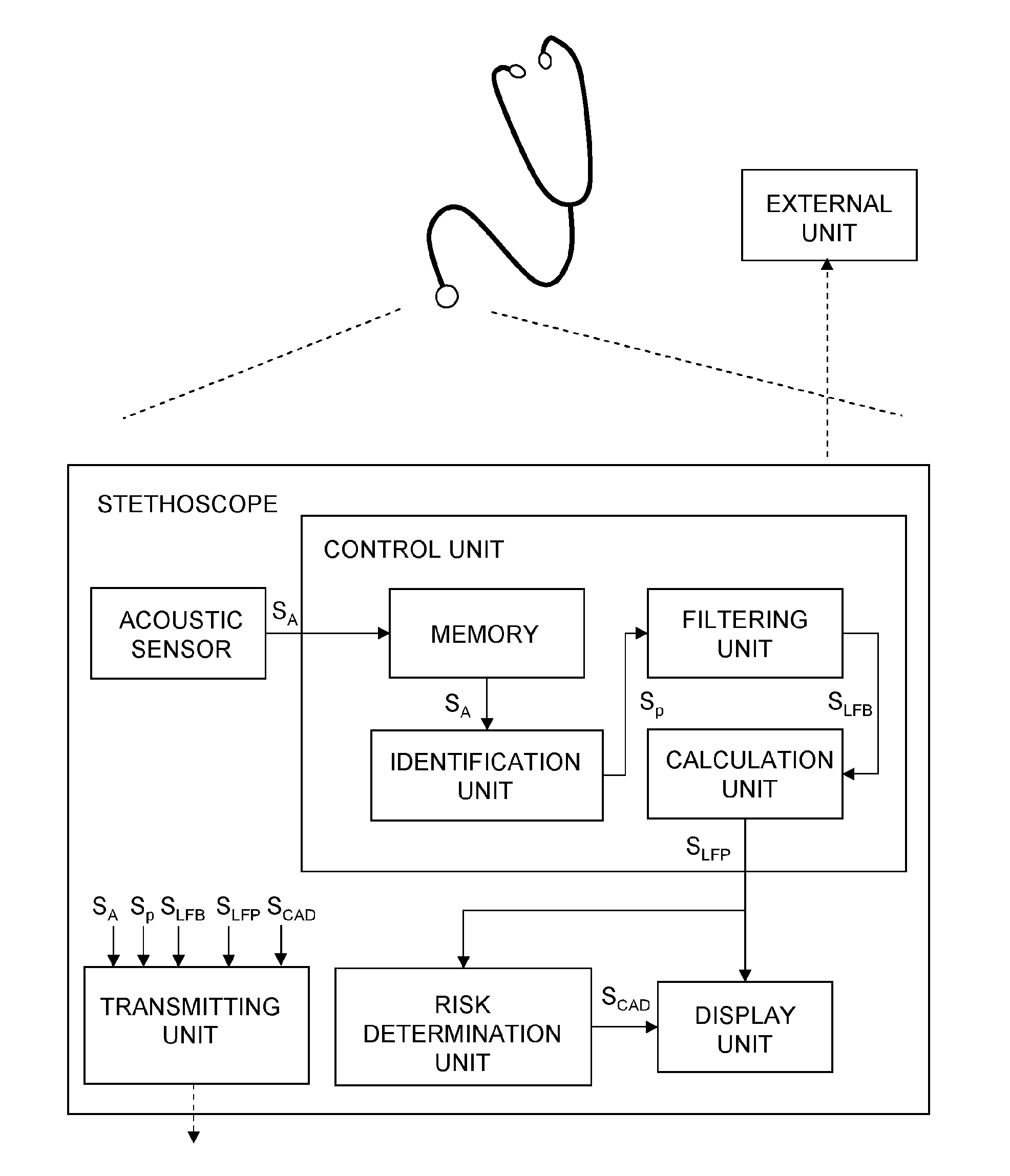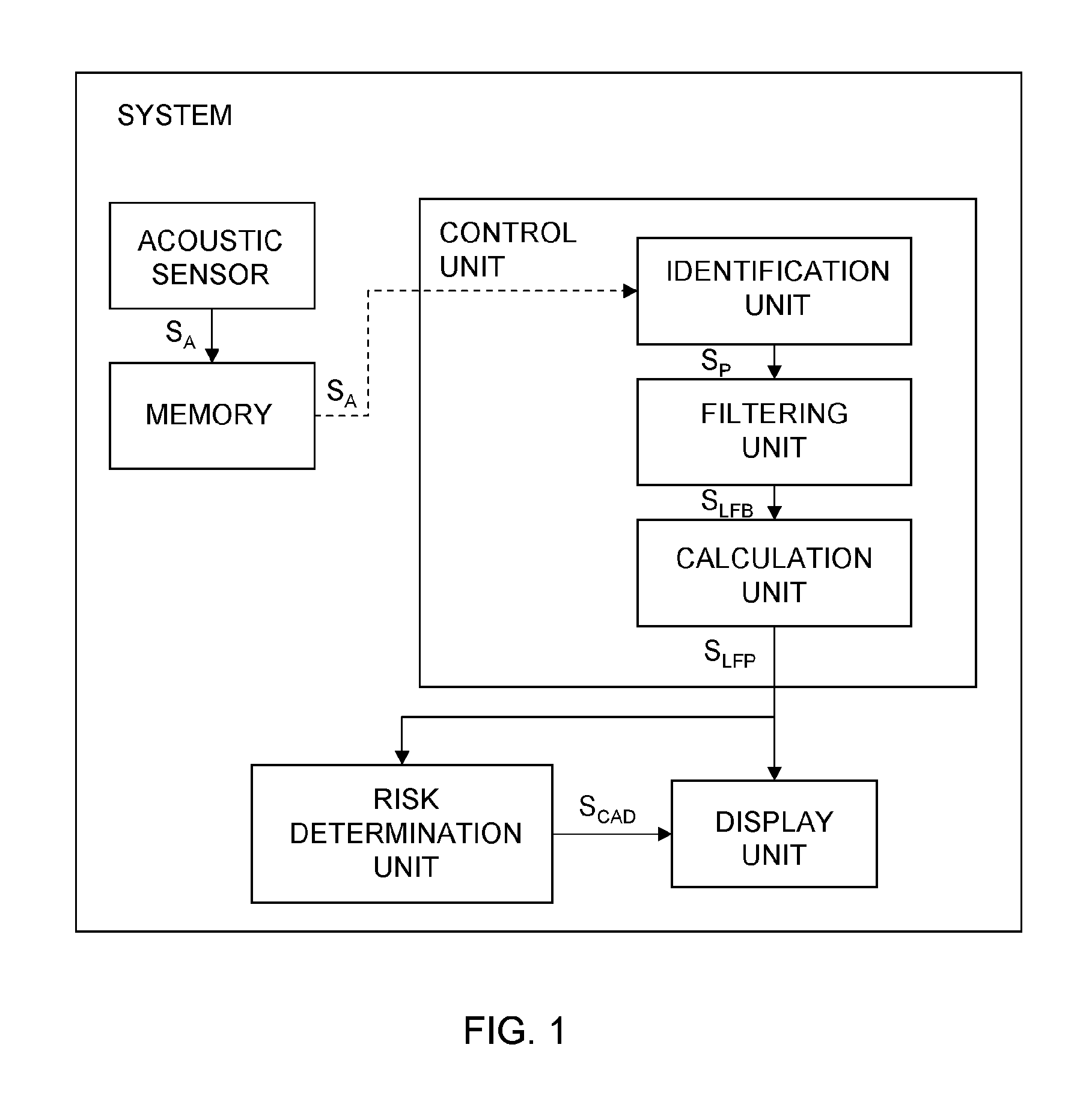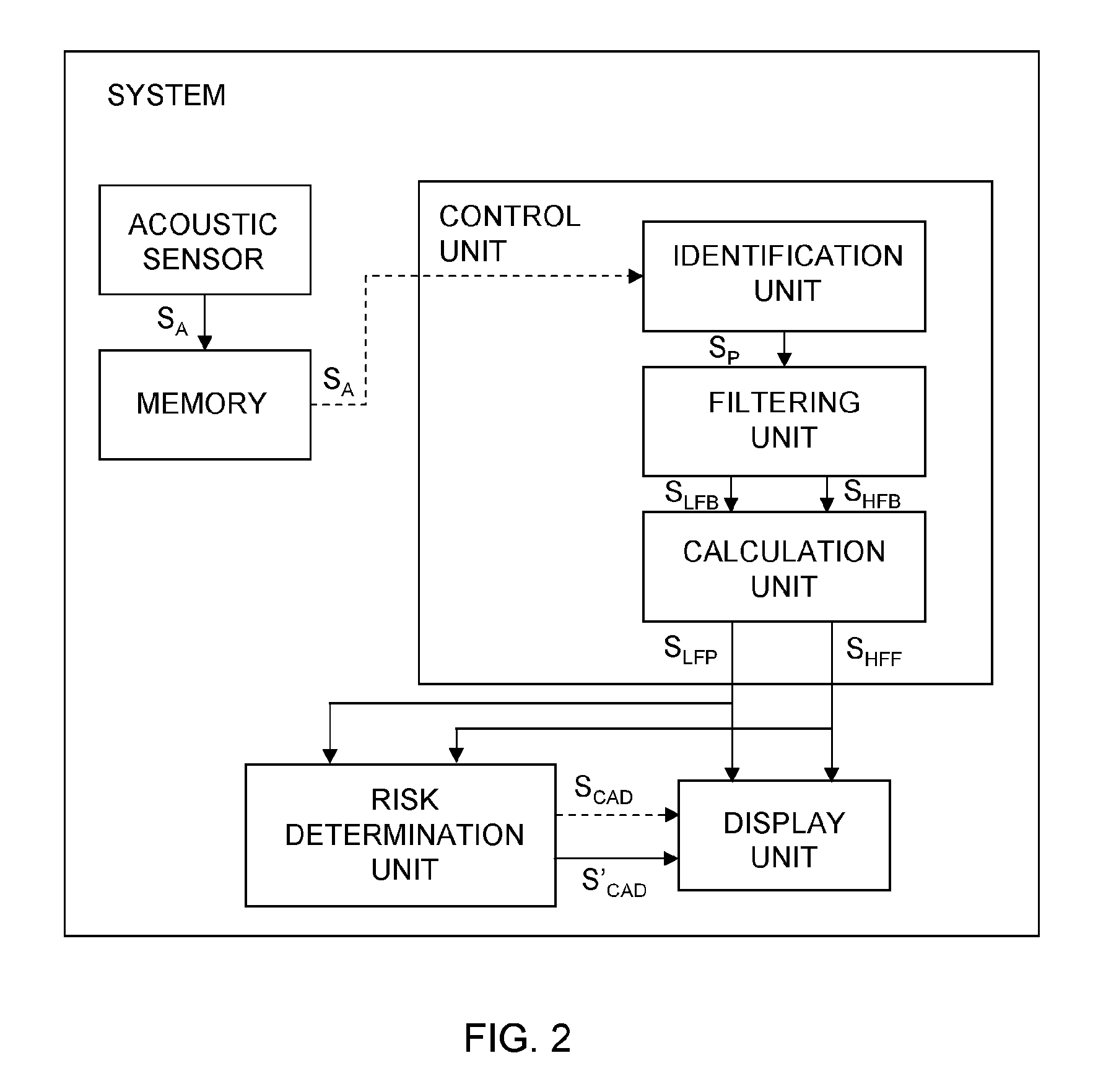System and method for indicating coronary artery disease risk based on low and high frequency bands
a low frequency band and risk indicator technology, applied in the field of system and a method for indicating a risk of coronary artery disease, can solve the problems of high-experienced physicians not reliably detecting important heart sounds, angina or a heart attack, and high cost, and achieve easy application of cad tests, low cost and ease of us
- Summary
- Abstract
- Description
- Claims
- Application Information
AI Technical Summary
Benefits of technology
Problems solved by technology
Method used
Image
Examples
example 1
[0054]FIG. 3 shows recordings of heart sounds with an electronic stethoscope of two different patients, filtered with a 20 to 50 Hz band pass filter. The top chart shows recordings from a non-CAD patient, and the lower chart shows recordings from a CAD patient. The recordings are from two males with approximately the same body mass index (BMI). As can be seen from the charts, the amplitude in both systole (S1) and diastole (S2) increased in the CAD patient.
[0055]According to another embodiment, the calculation unit is adapted to estimate the power by generating a power spectrum directly or indirectly with at least one auto-regressive (AR)-model of the low frequency band and calculate the power in the low frequency band. A power spectrum can be calculated directly by calculating using Fast Fourier Transform (FFT), and indirectly by calculating the power spectrum from a model of the signal. An autoregressive model can be viewed as the output of an all-pole infinite response filter who...
example 2
[0056]In the study according to the examples, a sub-segmentation method was used. The pole-magnitudes of the AR-models were extracted from the diastolic segments. The sub-segmentation method divided the diastolic periods into sub-segments of short duration and removed sub-segments with high variance, before the AR-pole magnitudes were calculated from the remaining sub-segments. The sub-segmentation method improved the robustness against noise of short duration, such as friction spikes. AR-models with order 2, 4, 6, 8 and 10 were constructed using the foreword backward method. The pole magnitude which obtained the best classification performance in recordings without insignificant noise was selected for the evaluation of the classification performance for all signals. Early studies of heart sounds from CAD patients focused mainly on frequencies above 200 Hz since CAD was associated with an increase in spectral energy above 250 Hz, whereas recent studies include lower frequencies. The...
example 3
[0061]The histogram in FIG. 4 shows the diastolic power in the 20 to 40 Hz frequency band in 264 recordings from 70 non-CAD subjects and 246 recordings from 63 CAD subjects, from the study according to the examples with an electronic stethoscope. The power was calculated by filtering the recordings with a 20 to 40 Hz band pass filter and calculating the variance in the diastoles. The feature is named low frequency power. The classification performance of the low frequency energy is measured with the area under the receiver operating characteristic curve (AUC). The AUC of the 20-40 Hz diastolic power was 69.44%. The mean power in the 20-40 Hz frequency band was 16.8 dB (STD=7.3) for the non-CAD patients and 21.7 dB (STD=6.2) for the CAD patients.
PUM
 Login to View More
Login to View More Abstract
Description
Claims
Application Information
 Login to View More
Login to View More - Generate Ideas
- Intellectual Property
- Life Sciences
- Materials
- Tech Scout
- Unparalleled Data Quality
- Higher Quality Content
- 60% Fewer Hallucinations
Browse by: Latest US Patents, China's latest patents, Technical Efficacy Thesaurus, Application Domain, Technology Topic, Popular Technical Reports.
© 2025 PatSnap. All rights reserved.Legal|Privacy policy|Modern Slavery Act Transparency Statement|Sitemap|About US| Contact US: help@patsnap.com



